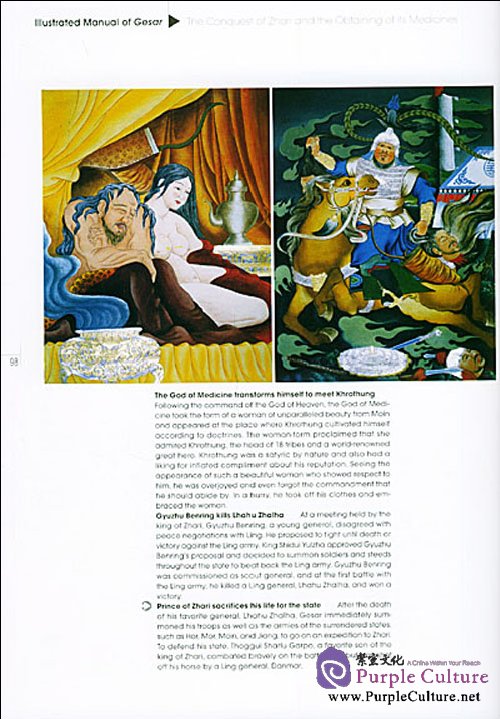Details
A crystallization of the wisdom of the Tibetan people, Gestar features a long history, numerous chapters, profound cultural insights, and interesting and colorful stories. Over thousands of years, it has been widely spread among the Tibetan people, enjoying great popularity. Representing the greatest accomplishment of Tibetan folk culture, it is regarded as an encyclopedia of the history and society of the Tibetan ethnic group. Its academic and aesthetic value has been highly recognized. International academic circles have praised it as "Homer's Epic of the Orient." Gesar is a great contribution the Chinese nation has made to human civilization, and just as Homer's epics, it is a bright pearl in the treasure house of world culture as well as a valuable cultural heritage of the world.
Thangka, a Tibetan word meaning "painted scroll", is an art of painting on silk or cloth. It is an integral part of Tibetan painting art, and has a long history. Thangka is closely related to fresco in terms of painting art. "Thang" means "show" in Tibetan; therefore, thangka paintings are created to show what are painted in frescoes. Because most of the thangka painters come from ordinary people, the thangka paintings are strongly tinged with Tibetan folk culture.
Thangka is closely associated with the epic, Gesar. Before the hand-copied and woodcut forms of the epic emerged, the circulation of the epic largely depended on folk balladeers. In order to reinforce the artistic inspiration and attract the audience's attention, some folk artists created thangka paintings based on the characters and stories of Gesar. These were the first thangka of Gesar. While singing, the balladeers pointed at the paintings to make explanations. Gradually, the thangka of Gesar became a unique art form known as zongthang. (Zong in Tibetan means stories about Gesar and thang refers to thangka.)
Both the great epic of Gesar and the fantastic art of thangka are gems of Tibetan culture and art.
Table of Contents
Preface
IIIustrated manual of gesar
gods and figures described in the epic gesar
iiiustrated manual of the epic gesar
The birth of the hero
Ascending the throne by winning the horse racc
The war between mor and ling
The war between hor and ling the invasion by hor
The war between hor and ling the conquest of hor
The war between jiang and ling
The war between moin and ling
The conquest of dashi and the obtaining of its treasures
The conquest of axha and the obtaining of its agates
The conquest of qeri and the obtaining of its corals
The conquest of kachi and the obtaining of its jade
The conquest of zhari and the obtaining of its medicines
The war between thogru and ling
Triumph over hell
The Art of thangka
Dethang-buddhist thangka
Manthang-thangka on medicine
Zithang-calendar thangka
Zongthang-thangka of the epic gesar
The production of zongthang
New developments of zongthang
Paintings of gesar by ballad singers
IIIustrations project for the selected edition of gesar in tibetan
The gesar thangka project of the tibet academy of social sciences
Reference
Postscript
Sample Pages Preview

1 Customer Review(s):
Write Review
